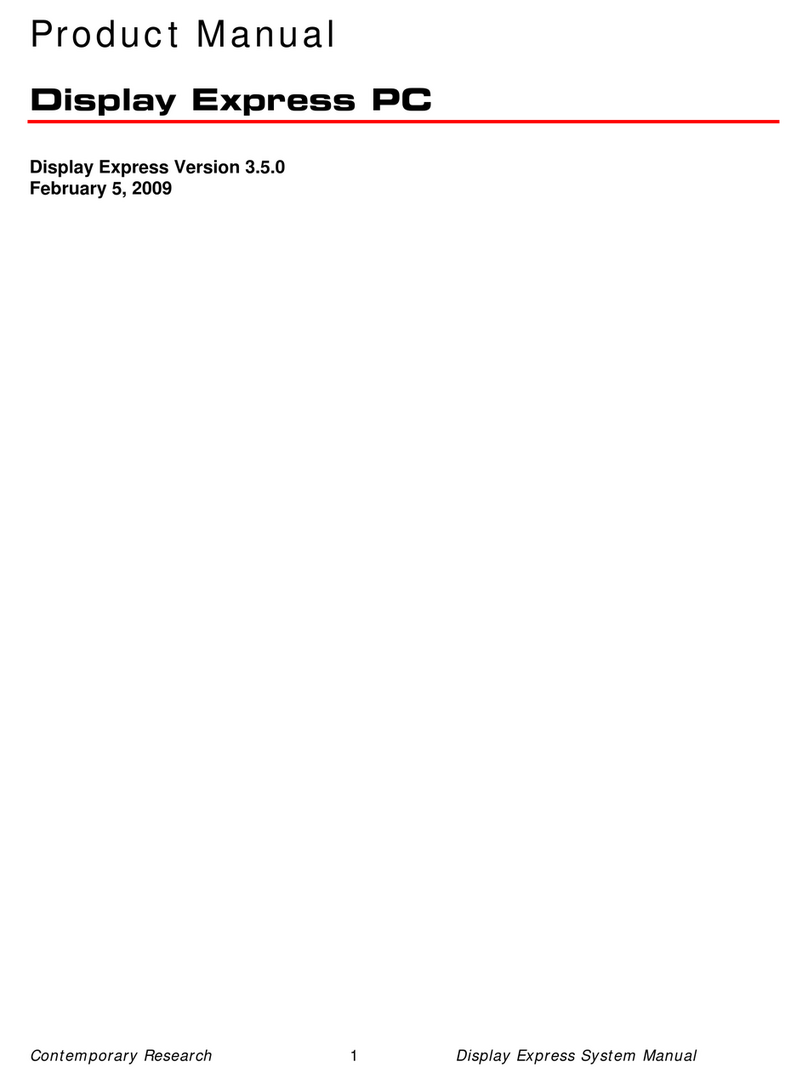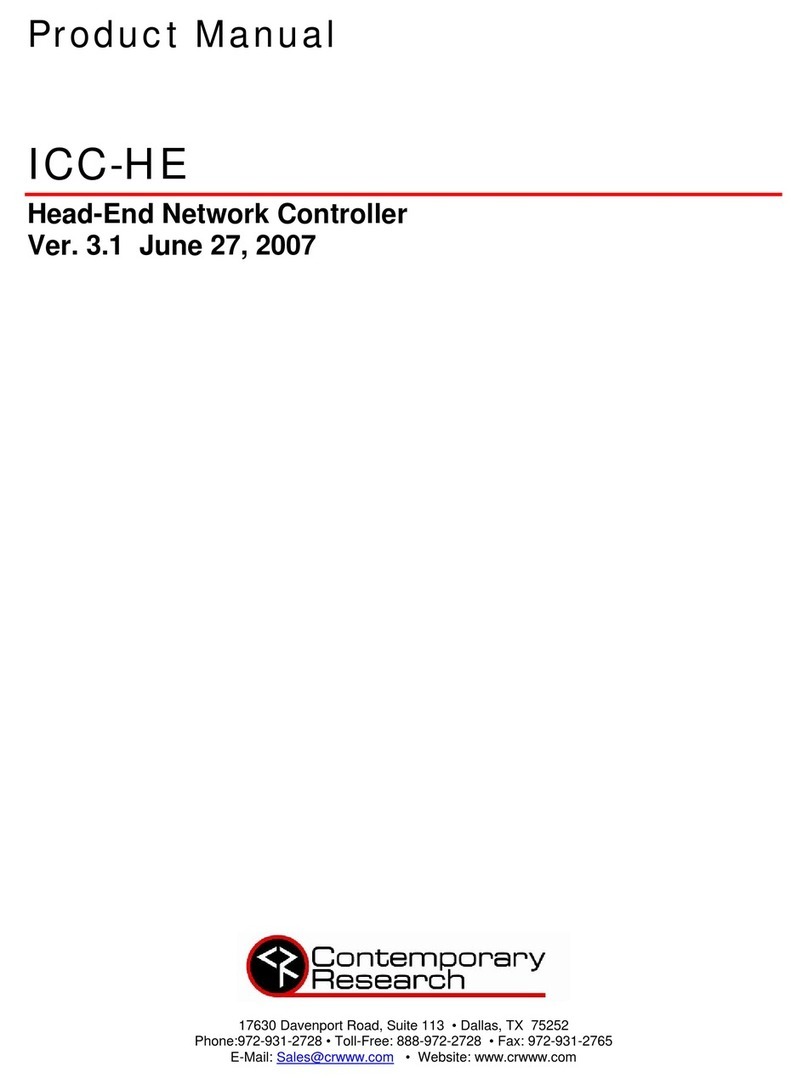Contemporary Research Corporation 2 ICC-HE/ICW-HE Manual
Table of Contents
Overview.....................................................................................................................................................................................................................3
Specifications..............................................................................................................................................................................................................4
Physical ..........................................................................................................................................................................................................................4
Front Panel .....................................................................................................................................................................................................................4
Control Connections.........................................................................................................................................................................................................5
iCW-Net Connections (ICC-HE and ICW-HE) ......................................................................................................................................................................5
iCC-Net Connections (ICC-HE Only)...................................................................................................................................................................................6
Power Connections ..........................................................................................................................................................................................................6
Includes .........................................................................................................................................................................................................................6
Installation .................................................................................................................................................................................................................7
RF Coax and iCC-Net Operation (ICC-HE Only)...................................................................................................................................................................7
AC Power and Net LED operation......................................................................................................................................................................................7
iCW-Net Connection (ICC-HE and ICW-HE)........................................................................................................................................................................8
Remote Control Connection..............................................................................................................................................................................................8
I/O Port Connection.........................................................................................................................................................................................................8
RS-232 Terminal Commands ......................................................................................................................................................................................9
RS-232 Control Protocol ...........................................................................................................................................................................................10
Overview ......................................................................................................................................................................................................................10
Command String Structure .............................................................................................................................................................................................10
Command format ..........................................................................................................................................................................................................10
RS-232 HE Commands..............................................................................................................................................................................................11
RS-232 Device Commands........................................................................................................................................................................................12
RS-232 Response......................................................................................................................................................................................................18
Response String Structure..............................................................................................................................................................................................18
RS-232 HE Response ................................................................................................................................................................................................19
RS-232 Device Response ..........................................................................................................................................................................................20
iC-Net Zones .............................................................................................................................................................................................................22
System Map ..............................................................................................................................................................................................................23
Typical RF and ICC-Net Signal Flow .........................................................................................................................................................................24
RF Channel Frequencies ...........................................................................................................................................................................................25
iCW-Net Wiring.........................................................................................................................................................................................................26
Safety Instructions ...................................................................................................................................................................................................27
Limited Warranty and Disclaimer .............................................................................................................................................................................28






























